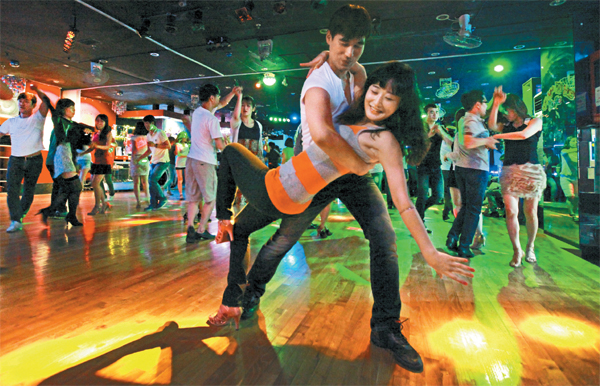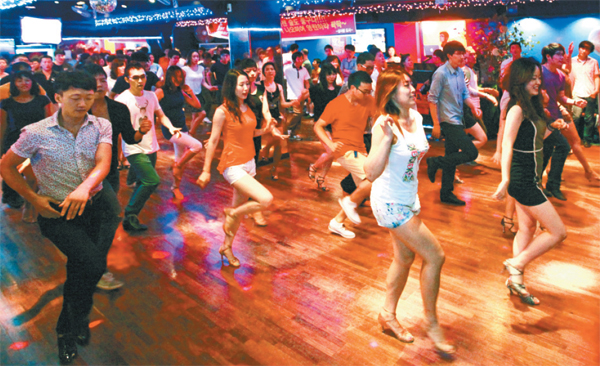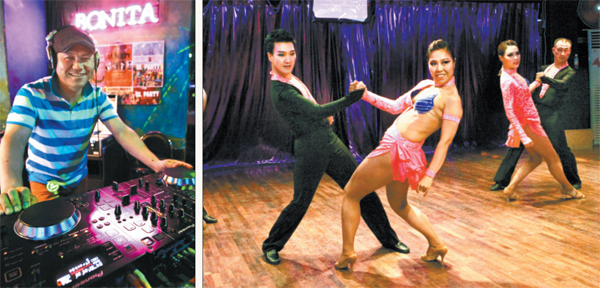When the nights get hot, salsa makes them even hotter

A man nicknamed “Hoons” showing off his salsa dance technique to upbeat Latin music with his partner in Club Bonita, near Hongik University in western Seoul.
Salsa dancing, like the music, originated in Cuba and its surrounding islands, combining Cuban rhythms with elements of jazz, rock and soul. The word “salsa” just means “sauce” in Spanish, but the music is incredibly flavorful and passionate.

Members of a salsa dance school dancing to Latin music at Club Naomi in Gangnam, southern Seoul.
But more than just exercise, salsa is a great way to meet new people from all walks of life. Dancing breaks down barriers and helps you make friends, which is, no doubt, one of the main reasons it attracts so many young people (and many not-so-young people, too).

Left: A deejay known as “Street,” spinning music in a salsa bar. Right: The Lady Styling team from the Jane Salsa Academy performing at the One Summer Night Party at Club Naomi.
In Club Naomi in Gangnam, southern Seoul, a crowd of young adults were dancing the night away to Latin music on a recent Saturday when this photographer visited. While over at Club Bonita, near Hongik University in western Seoul, it was jam-packed with more than 100 people at 9 p.m. on a recent Wednesday.
But these days, there are dozens of clubs to choose from all over Korea, including Turn, near Gangnam Station, which specializes in dancing for advanced salsa fans. There are also clubs in Busan, Gwangju, Jeonju and more. Whenever you choose to go, those dancing fill the atmosphere with fervor and inspiration.
Hwang In-chul, the manger of salsa society Into Latin World talked about what salsa means to him. “After learning salsa dancing, I noticed I was happier at work,” Hwang said. “Previously, I didn’t have any outlet to channel my stress but now I can release stress by dancing salsa. It helps me a lot with keeping healthy mentally.”
By Park Sang-moon[moonpark@joongang.co.kr]










with the Korea JoongAng Daily
To write comments, please log in to one of the accounts.
Standards Board Policy (0/250자)